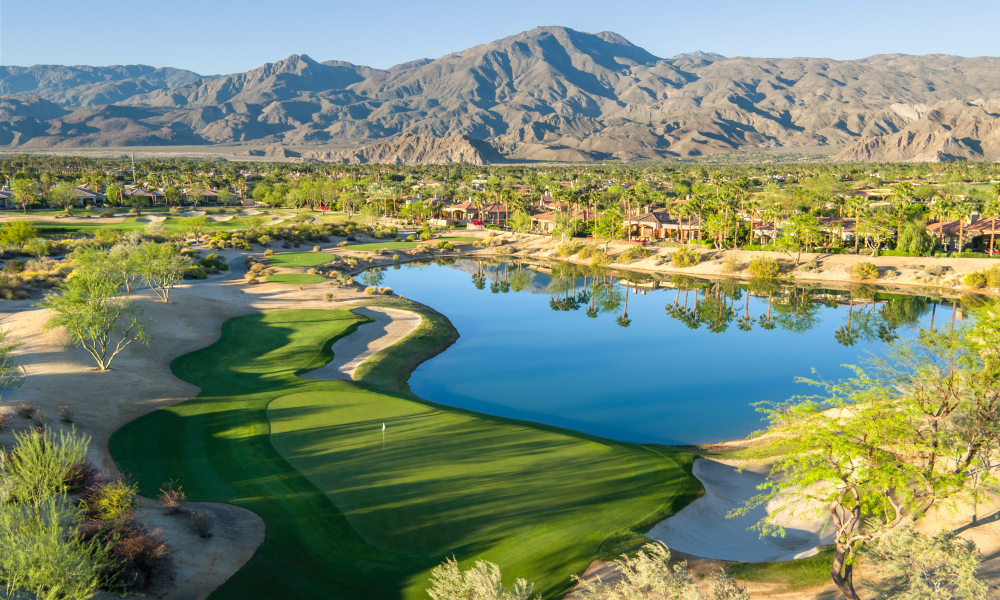
Martin Kaufmann November 8, 2021 10:55 am ET
From the moment we first glimpsed PGA WEST at the “Skins Game” 35 years ago, we all knew that we had witnessed something transformative. Viewers couldn’t help but marvel at how land so rugged and unforgiving could be transformed into something so beautiful and seductive, ultimately luring an untold number of golfers from around the world to California’s Coachella Valley over the past 35 years.
PGA WEST quickly earned a moniker – “The Western Home of Golf in America” – that reflected the fact that all of the major professional tours and the NCAA regularly visited, allowing the game’s best players to test themselves against some of the stiffest designs of Pete Dye, Jack Nicklaus, Arnold Palmer, Tom Weiskopf, and Greg Norman. It also became a bucket-list destination for avid golfers and an attractive landing spot for couples looking to enjoy the good life in the desert.
Last year Century Golf Partners, an established operator of high-end clubs and resorts, teamed with Hankuk Industry, which owns courses in the U.S. and Japan, to acquire PGA WEST and The Citrus Club, including the Mountain and Dunes golf courses. That set off a whirlwind of activity, with the new ownership pouring resources into course improvements on all nine PGA WEST courses. The goal of this long-term project is three-fold: provide tournament conditions daily; bring more big tournaments to the property; re-establish PGA WEST as a must-visit destination with courses that are fixtures on top-100 lists.
“We want to secure our position in the top five of U.S. club resorts in the U.S.,” said Ben Dobbs, PGA WEST’s Executive Director. “We have the architects, the properties and the location to achieve this. Having iconic golf courses and great architects were just the beginning. Now we must be innovative, relevant and provide exceptional experiences.”
That attitude is reflected in the recently completed work on the Greg Norman Course, which opened in 1999. Greens were restored to their original sizes, and the TifDwarf Bermuda grass was replaced with TifEagle, which eventually will be installed at each course, creating optimal year-round conditions. In addition, more than 100 bunkers were rebuilt, the expansive native areas were restored, and turf was added to enhance playability on the brutal target-golf layout.
PGA WEST has also made a major commitment to deep-tine aerification equipment, ensuring healthier turf conditions. Each course is being aerified twice annually.
“Ultimately, we’ll have firmer greens and the ability to mow them lower,” said Chris May, Director of Agronomy, who will guide the eventual restoration of all nine courses. “We want tournament conditions on all of these courses before and after overseeding. The benefit of doing all of this work is they get in really good shape in the summer as well.”
The work on the Norman Course follows the restoration last year to the Jack Nicklaus Tournament Course – which pairs with PGA WEST Pete Dye Stadium when the PGA TOUR visits each January to play The American Express – and work this year on the Arnold Palmer Private Course.
The latter, with its finishing holes sculpted along the rugged Santa Rosa Mountains, produced some of the most memorable moments of the PGA Tour’s West Coast Swing, including David Duval’s closing eagle in 1999 to shoot 59 and win the tournament. The course has never been in better shape. May’s team installed TifEagle putting surfaces over new greens irrigation, restored all greenside bunkers to original specifications, and replaced all of the bunker sand.
Brandon Johnson, the long-time senior architect for Arnold Palmer Design, returned to La Quinta to revitalize the picturesque finishing holes along the All-American Canal. Johnson put in new bunkering on Nos. 14 and 16 to create more differentiation between those approaches and added a knob on the back of the par-5 14th that presents a new risk-reward scenario for players trying to reach in two. “It definitely has a par-5 green now,” May said.
Johnson restored the other greens to their original contours, recapturing Palmer’s original vision.
“He tied together the whole course with one type of look,” May said.
PGA WEST’s executive team will face interesting choices on the Pete Dye Stadium Course, unquestionably one of Dye’s masterpieces. May guarantees “a restoration, not a renovation,” including recapturing the original green shapes and sizes.
“Every idea that Pete had is on this golf course,” May said. “It’s remarkably untouched – partly because it’s always been so busy that they weren’t able to do the work. We want to bring it back to what it once was.”
While May’s team is busy on the course upgrades, Dobbs also is overseeing enhancements to the five clubhouses and amenities. Those amenities include a recently opened $10 million Sports Club.
“Our owners have committed to owning us for generations, so that helps our team make long-term decisions,” Dobbs said. “I’m super-excited to be able to share everything that we are doing with golfers from around the world.”